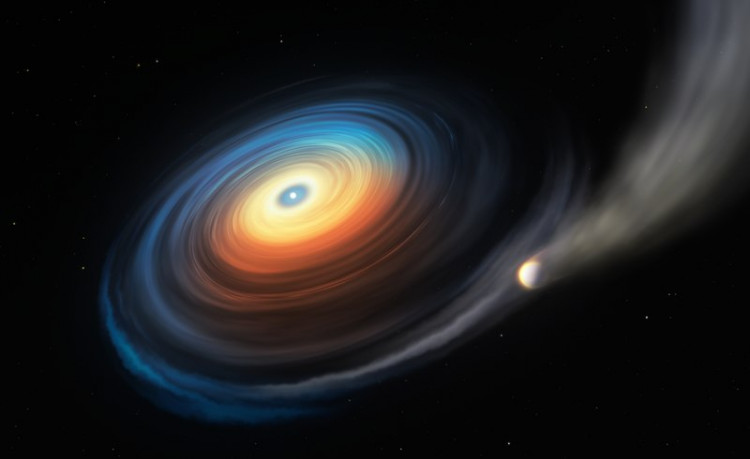We may now have strong proof of planets living unscathed by the chaotic churn attending the death of their host star. Recent research has detected hints of an intact giant planet orbiting a superdense stellar corpse known as a white dwarf.
WD 1856, the white dwarf in question, is part of a three-star system that is approximately 80 light-years away from Earth. The recently discovered exoplanet candidate the size of Jupiter, WD 1856 b, is around seven times bigger than the white dwarf and once every 34 hours zips around it.
"The white dwarf creation process destroys nearby planets, and anything that later gets too close is usually torn apart by the star's immense gravity," study lead author Andrew Vanderburg, an assistant professor of astronomy at the University of Wisconsin-Madison, said in a statement. "We still have many questions about how WD 1856 b arrived at its current location without meeting one of those fates."
Using NASA's Transiting Exoplanet Survey Satellite (TESS), which searches for alien worlds by noticing the tiny brightness dips they cause while transiting, or crossing the faces of their host stars from the viewpoint of the spacecraft, Vanderburg and his colleagues found WD 1856 b.
Shortly before the observatory's January 2020 decommissioning, the team then analyzed the device in infrared light using NASA's Spitzer Space Telescope. The Spitzer data showed that WD 1856 b does not emit its own infrared light, indicating that the object is a planet rather than a low-mass star or a brown dwarf, a body that traverses the hazy line between planets and stars.
Still, for now WD 1856 b remains a candidate planet, waiting to be confirmed by further study or observations.
Considering the mechanism that shapes them, you would not generally anticipate white dwarfs to be promising targets for TESS and other planet hunters.
They bloat into red giants when sun-like stars run out of hydrogen fuel, engulfing and incinerating anything orbiting nearby. For instance, Mercury, Venus, and maybe Earth will be consumed by our own sun until it becomes a red giant, around 5 billion years from now. Eventually, red giants crumble into white dwarfs that usually cram our sun's mass into a sphere that is just marginally larger than Earth.
So it is fair to conclude that WD 1856 b did not form at its present location; the structure may never have survived the red-giant period of WD 1856. In fact, the calculations of the study team indicate that the candidate planet must have been born about 50 times farther from the star than its current position, and then drifted into it.
No other planets have been spotted in the 1856 WD universe, but that doesn't mean that there is none there, reported members of the study team.
In a companion article, which was published today in The Astrophysical Journal Letters, Vanderburg and other researchers explored this idea.




